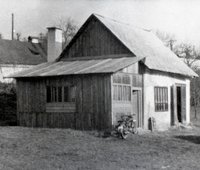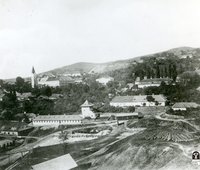Piarg, as Štiavnické Bane has been called since time immemorial, is an old mining settlement. For years, Piarg was in the shadow of Banská Štiavnica, but the history of the village is impressive. Already from the 15th century, Piarg led in the amount and processing of ore and had the status of one of the most important mining centers of the Austrian monarchy. It was the center of science, technology, education and healthcare and high mining administration. Many inventors worked here, including Matej Kornel Hell and his sons, Samuel Mikovíni, Juraj Palkovič and others. In 1740, mining reached its peak. It was extracted 600 kg of gold and 23 tons of silver here, which was a world record. There were dozens of shafts and adits in the village among the surrounding hills with 6 to 12 thousand inhabitants. Small mining houses still stand on the steep slopes, surrounded by fruit gardens. Small crosses and chapels are abundantly scattered throughout the bounds, which indicate the proximity of the forgotten mine. There was a building for land-surveying, built without a single nail so as not to disturb the magnetic instruments. The center of cartography was located here, where not only maps of the area were drawn, but also maps of distant European cities. Here, in 1627, for the first time in the world, gunpowder was used for blasting rock, the first mining hospital in Hungary and the first school for mining experts in Central Europe were located here, many technical inventions emerged from the workshop of Hell family.



